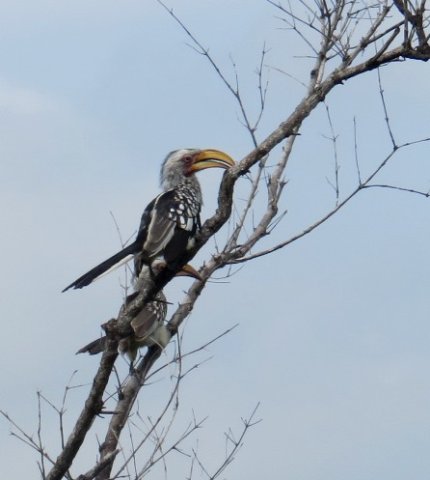Southern yellowbilled hornbills

Author: Ivan Lätti
Photographer: Ivan Lätti
Two branches, two birds. You’re not seeing double unless you see four of them. Pairs will even things out as solitary sightseeing seems odd. Safety in numbers for the eaten in the land of the eating is an investment in survival, actuarially sound though a mere two hardly improves the odds.
Living food is recognised in the bush by the company it keeps, as the more they are, the more certain that one will be seen, another one eaten in the end.
These ones flock together, even though their squawky conversation is monotonous and a give-away as to location: Staccato notes repeated enthusiastically, fortissimo style into the heat of the afternoon bush? Dull, not droll, especially when the both of them carry on a bit, virtually indistinguishable, just more of it.
Vigilance adds days to lives in the bush and four eyes are better than two! Who eats southern yellowbilled hornbills anyway? Northern sounds like snack with promise; going southern suggests dead already, like anticipatory carrion. And yellowbilled hornbill must be tautological; like you did see double for starters!
In the real bush almost everybody participates once in being eaten, barring the top of the heap, the king of the food chain. Such a one is included on the altar of prandial proceedings as the sacrificial component only after its spontaneous demise. It is eaten most politely.
Being eaten constitutes a service to society although feathers and yellow bills hardly qualify as relish. Until that day arrives for a hornbill, its best chance of avoiding old age, it continues to make funny noises aimed at the shadowy company of the alter ego, soul mate or sole mate.
Flying from branch to branch, consuming rodents and scorpions wherever they are, is a life after all. Thousands try it.

